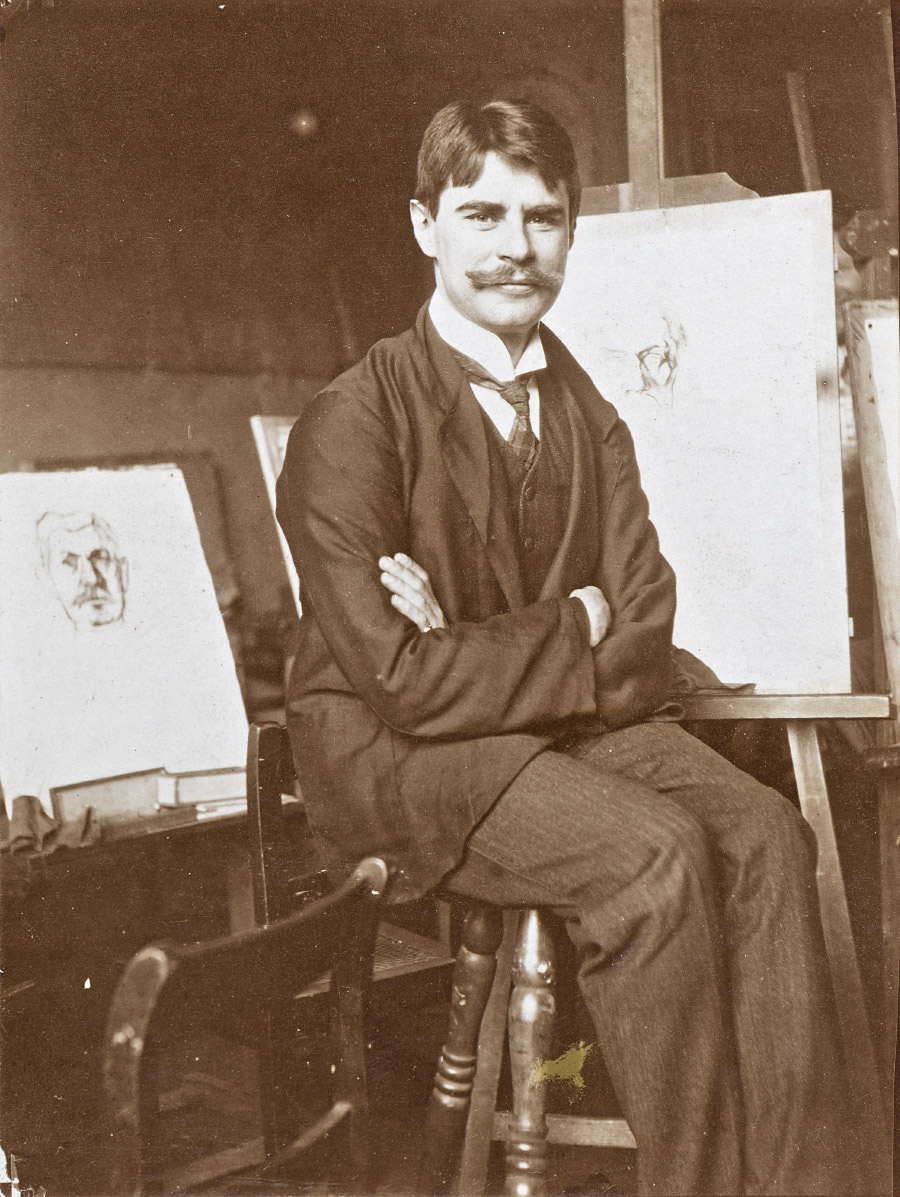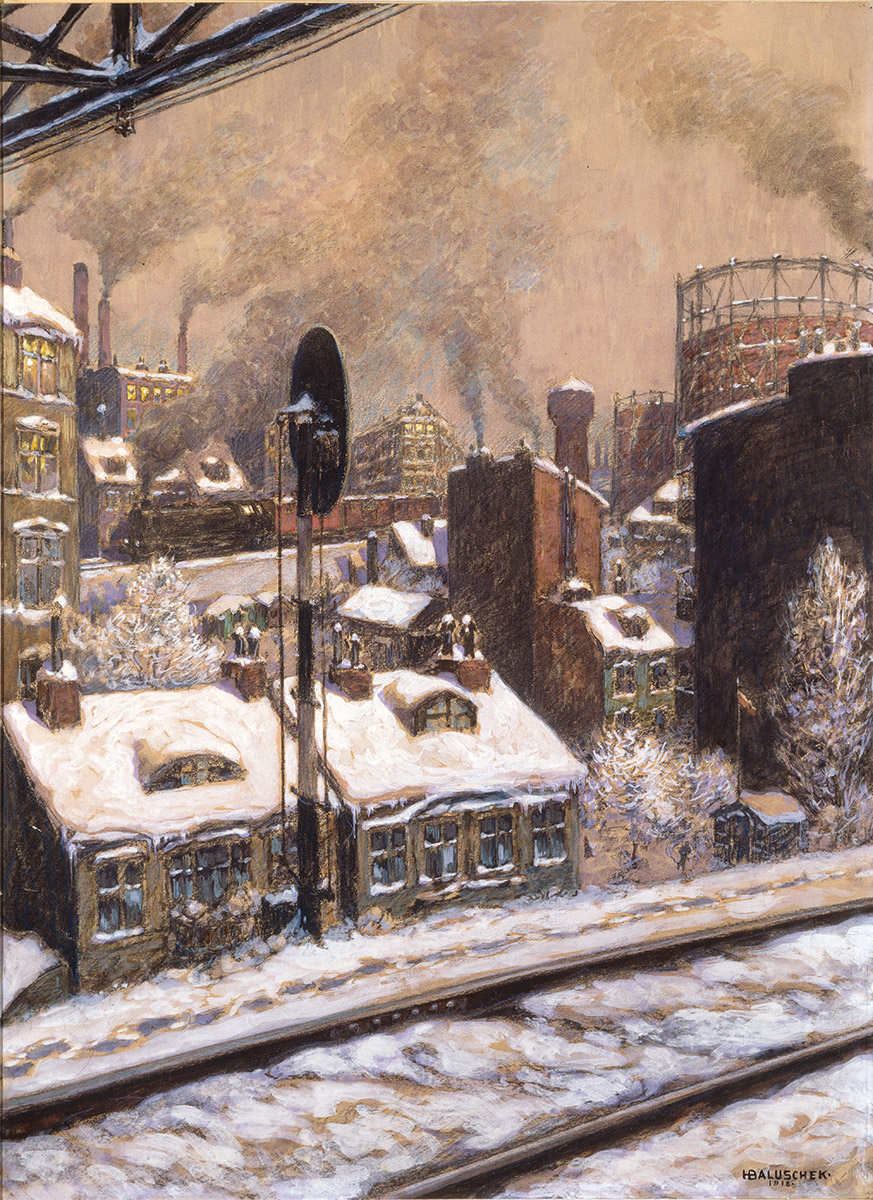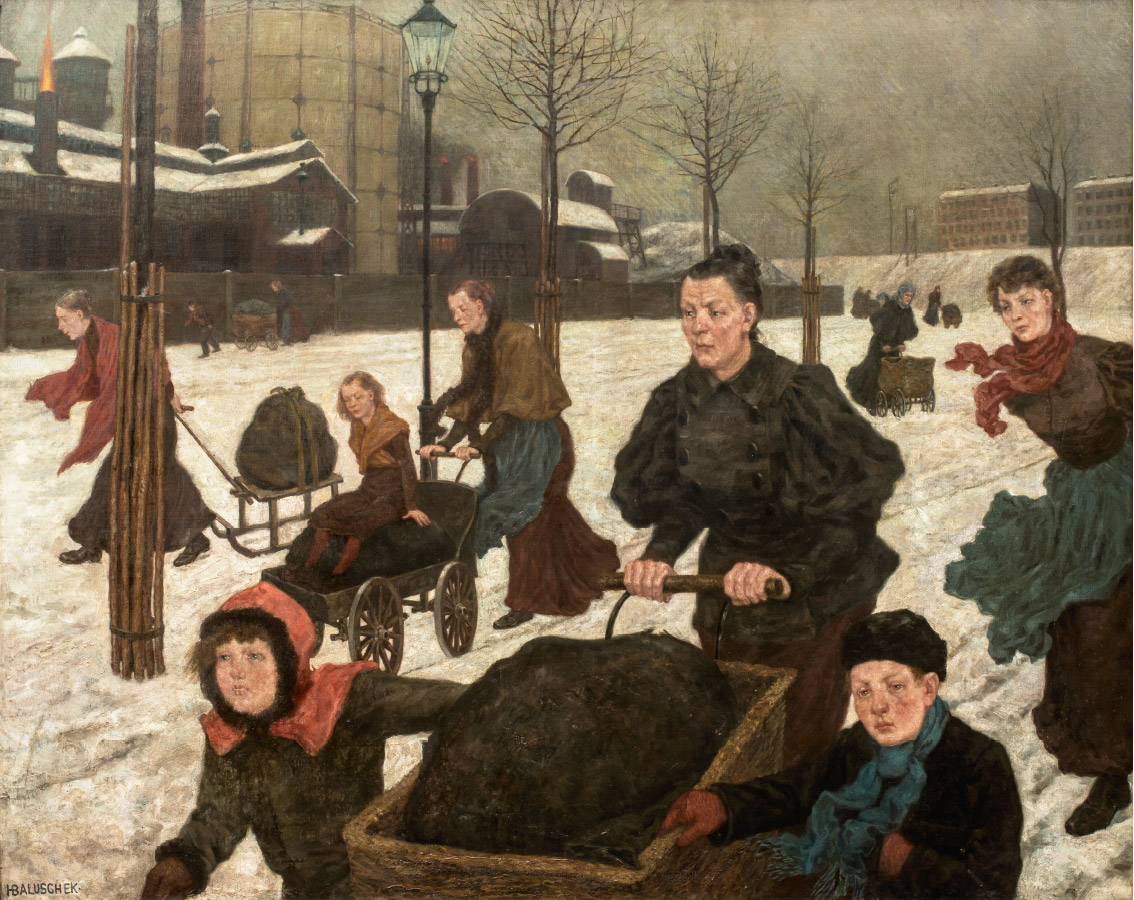Hans Baluschek
The life and work of the painter Hans Baluschek (1870–1935) are closely connected with Schöneberg.
In 1895 Baluschek moved to the Schöneberger Insel, first to Gotenstrasse 4, then in 1898 to Cheruskerstraße 5, where he lived until 1907.
From his rooms he had a far-reaching view of the railway tracks and the Schöneberg gasworks – ideal for the artist, who was fascinated by railway, urban and industrial scenes and found his preferred subjects there. “The things around me that somehow move, grab, enthral and stir me are what give me impulses for my pictures,” as Baluschek later explained his artistic impetus.
Local artist of the big city
In 1898 Hans Baluschek first participated in an exhibition of the Berliner Sezession. Around 1900 he taught, together with Käthe Kollwitz, at the art school for girls in Potsdamer Strasse.
After moving away from Cheruskerstrasse Baluschek continued to maintain a close connection with the people and motifs of the Schöneberger Insel. His later addresses were not far away: Vorbergstrasse 5, Akazienstrasse 30, Hauptstrasse 34/35 or his studio in the Ceciliengärten residential quarter, from where he again had a view of the railway and the huge domes of the gasometers.
In the fall of 1920 Hans Baluschek curated a communal-historical exhibition under the title “Pictures of Old Schöneberg”. It showed views, plans and pictures from 1685 to 1920.



